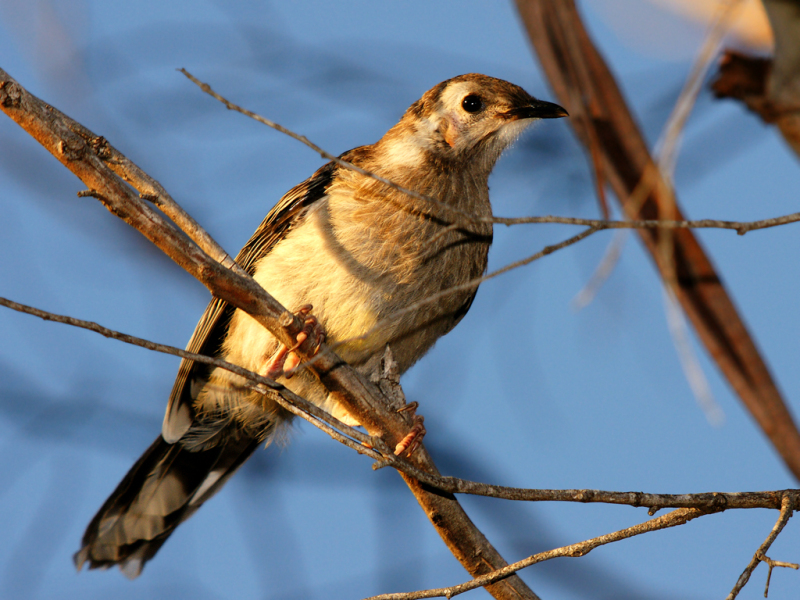
©J.J. Harrison: Young Yellow Wattlebird (Anthochaera (Anthochaera) paradoxa) with minimally developed wattles
Colours
Distinguishing features
They have a white face and black streaked crown. They also have a long, pendulous yellow-orange wattle at the corner of the mouth. The wattle becomes brighter during breeding. They have dark wings and a yellow belly whereas the upperparts are grey to dusky brown.
The female is much smaller than the male. The young have much smaller wattles, a paler head and a browner underbelly than the adult birds. (Wikipedia)
Size
- From 37 cm to 48 cm (Length of specimen)
Wingspan
- Wingspan data is not yet available.
Synonyms
Distribution

©Atlas of Living Australia: Australian distribution: Yellow Wattlebird (Anthochaera (Anthochaera) paradoxa)
Distribution and habitat preferences
They are common in Tasmania especially in the eastern and central areas. They are also found on King Island.
They live in a variety of habitats including both dry and wet forests and from sea level to the subalpine zone. They live in coastal heaths, forests and gardens near eucalyptus trees. They also can be found in mountain shrubberies and open woodlands, particularly those dominated with banksias. They have also been known to be found on golf courses, orchards, parks and gardens. (Wikipedia)
Diet
They feed on the nectar of eucalypts and banksias, fruit, insects, spiders, honeydew and manna. They forage from all levels of the canopy from the ground to the top of the trees. (Wikipedia)
